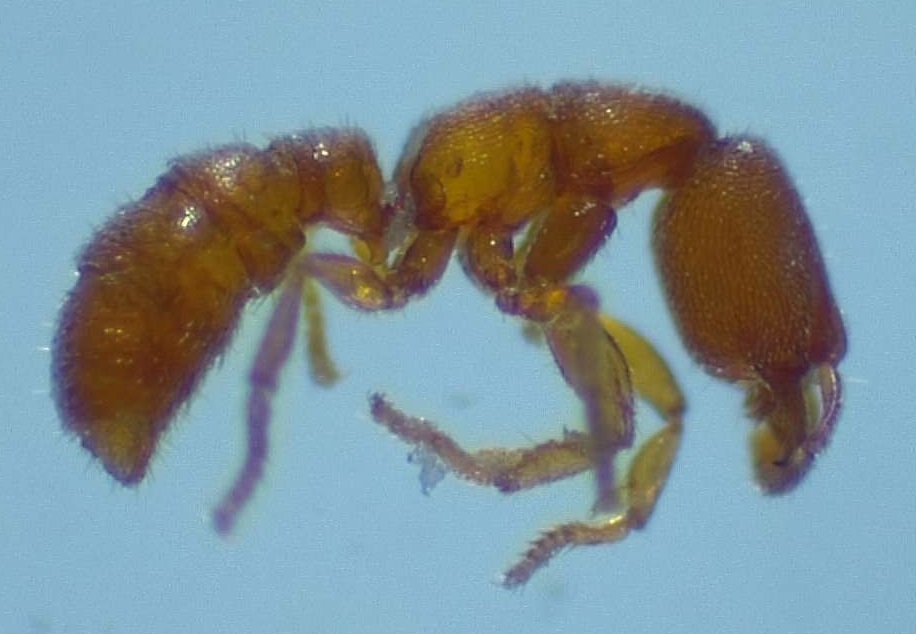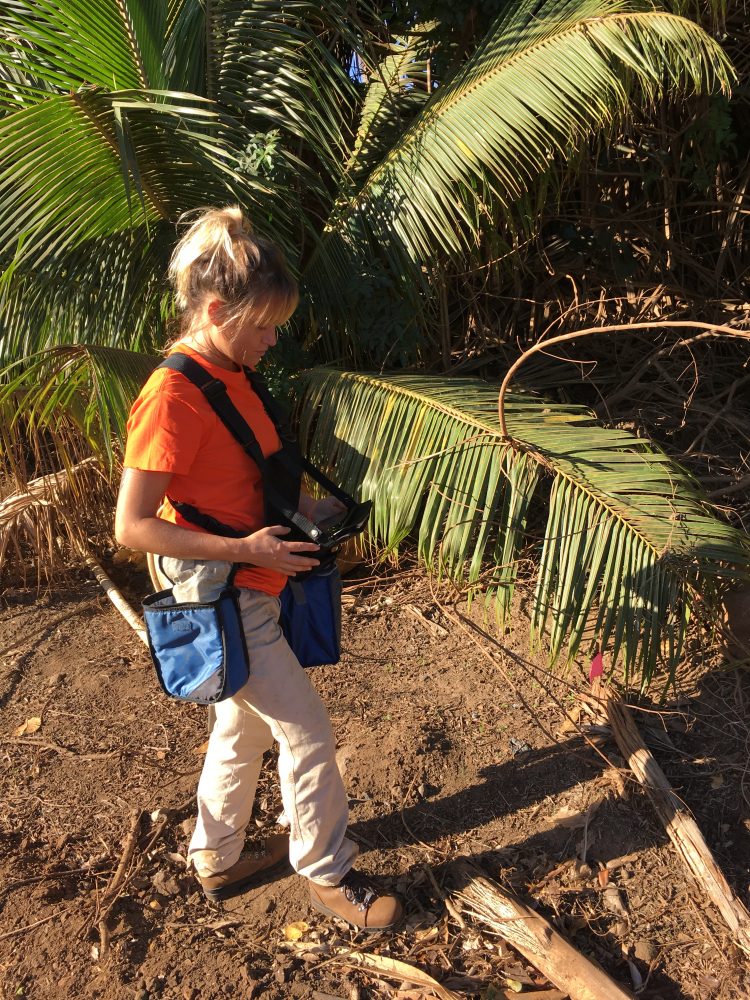In March of 2022, the Maui Invasive Species Committee’s (MISC) little fire ant (LFA) crew was wrapping up what they thought would be an uneventful day. The crew had placed peanut-butter-baited vials as part of a routine survey to attract little fire ants. LFA team member, Monte Tudor-Long, was examining the samples under a microscope when he noticed a solitary, reddish-tinged ant mired in the peanut butter in one of the vials. Assuming it was an LFA, he almost moved on to other vials, but something nagged him to look closer. He painstakingly washed the ant with alcohol and placed it on a slide. Tudor-Long was surprised to find the ant was not LFA or even a common tropical fire ant, but something he had never seen before. It turned out to be a Dracula ant, known as Stigmatomma zwaluwenburgi, and had not been recorded anywhere else for the last 20 years. But what was it doing here?
Dracula ants drink the blood of their larvae, leading to the gruesomely appropriate name. As odd as this behavior is, it doesn’t appear to harm the young and provides essential nourishment to queens. You would not find this ant on your kitchen counter. Like any good vampire, these solitary hunters spend most of their lives in the dark. They lurk underground or in leaf litter and typically aren’t born with eyes.

Scientists and naturalists have only collected a dozen specimens of Stigmatomma zwaluwenburgi in the world. The species was first discovered in Hawaiʻi in 1937 by R.H. Van Zwaluwenburg, an entomologist with the Hawaiian Sugar Planters Association, and was named after him. The ant collected by MISC is the first one found in Hawaiʻi since 1945 – 77 years ago.
Tudor-Long sought outside confirmation of his identification. “MISC’s ant matched with Stigmatomma zwaluwenburgi,” said Paul Krushelnycky, Assistant Researcher with the University of Hawaiʻi at Mānoa’s Department of Plant and Environmental Protection Sciences. Krushelnycky sent the sample to Brian Fisher at the California Academy of Sciences who is revising the taxonomic tree of Dracula ants. Fisher had not been able to extract enough DNA from the few remaining specimens. Armed with this fresh sample, he can now delve more deeply into the genetic history of this Dracula ant.
“Think of it like a 23 and Me for ants,” Krushelnycky explains. “The more samples taken of these ants and their relatives, the more complete the branch of this sub-family grows, and more specific connections are formed. We then begin to understand where it could have originated.”

Since Hawaiʻi has no native ants, it is still unknown how this one originally arrived. As for the single ant found in Huelo, Tudor-Long is still in awe of how it came to his desk. “This tiny ant, next to an infestation of some of the most voracious invasive ants in the world, just seemed to have wandered into the vial.”
While this species is unlikely to be invasive, the discovery highlights the importance of careful observation. “Reporting and collecting stinging ants in Hawaiʻi is essential to preventing the spread of a new little fire ant infestation or detecting a new invasive species such as the red imported fire ant,” he says. “You could also discover something unique, like this Dracula ant.” Who knows what new discovery may be lurking in your backyard? If you don’t look, you will never know what you may find.
You can help look for LFA and other potentially harmful ants at home! To request a free ant collection kit, visit stoptheant.org.
Serena Fukushima is the public relations and education specialist for the Maui Invasive Species Committee. She holds a bachelor’s degree in environmental studies and a graduate degree in education from the University of Hawaii at Manoa. “Kia’i Moku, Guarding the Island” is written by the Maui Invasive Species Committee to provide information on protecting the island from invasive plants and animals that threaten our islands’ environment, economy and quality of life.
This article was originally published in the Maui News on June 11, 2022 as part of the Kia‘i Moku Column from the Maui Invasive Species Committee.
Read more Kiaʻi Moku articles
